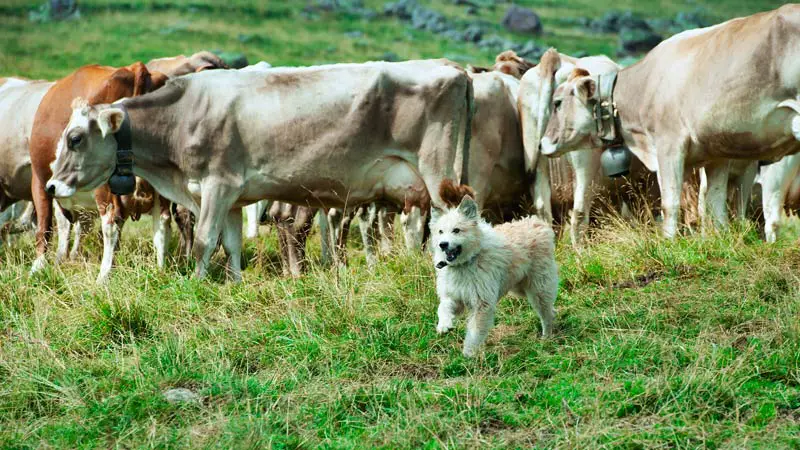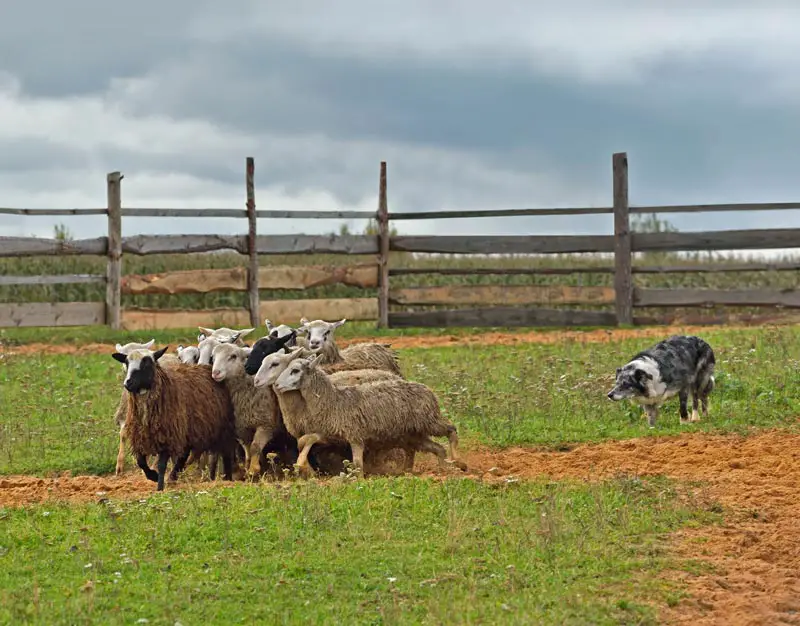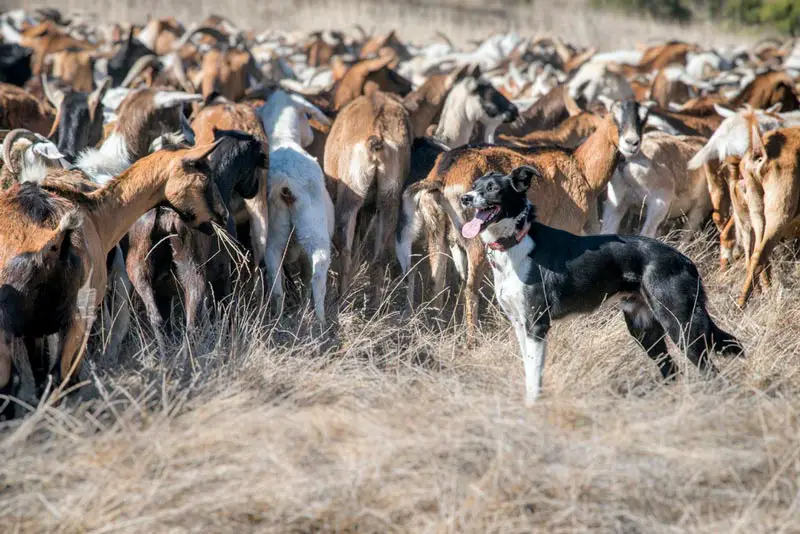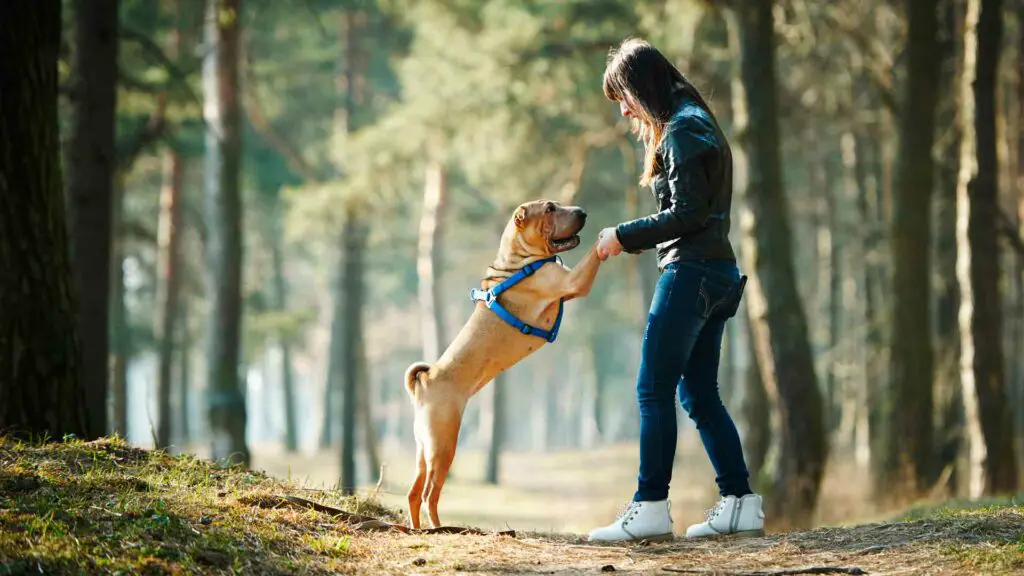What is Herding Behavior?
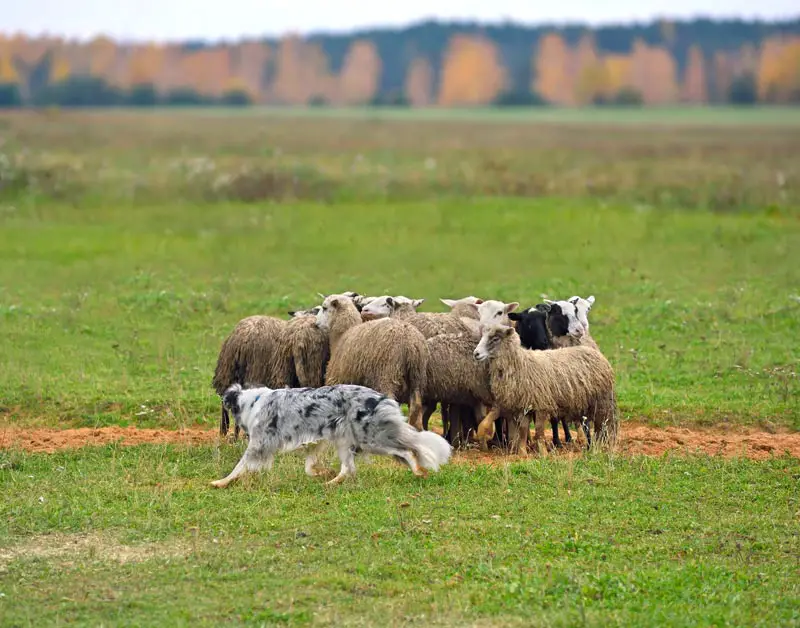
Traces of herding behavior can be seen in both sporting and non-sporting dogs and whether the dog lives on a remote farm or in a suburban mansion makes no difference to its instincts. For example, a dog may try to nip at your feet as you’re running around in the garden or try and chase the speeding car on the other side of your fence.
Both are evolutionary hangovers from dogs’ hunting days. Breeds such as the Cardigan Welsh Corgi and the Pembroke Welsh Corgi were used to follow behind a group of cattle traveling from Wales to London, nipping their heels as they moved.
However, herding behavior involves many more facets than mere ‘heeling.’ Border Collies, for example, were trained to get in front of a herd of animals and assert their dominance. Their prolonged eye contact and deep, authoritative bark are enough to keep a group of livestock well within the throws of submission.
Victorian-era butchers used dogs to help control flocks in a manner that led to them being dubbed ‘catch’ dogs. The canines would circle a group of chickens, for example, and round them up so the farmer could count, move, or slaughter them. This was constant work for the canine and served as the origin for the British saying ‘’fitter than a butcher’s dog.’’ Your dog may retain some of these characteristics as it circles around a guest in your home or marks its territory by circling its toys.
German Shepherds are perhaps the most well-known herding dog breed. Renowned for their intelligence and athletic prowess, their talents continue to be utilized in human society. They’re often used as police and guide dogs in contemporary life, but they have been used in rural settings for generations. There’s a reason why your German Shepherd follows you around the house – it has been doing it with sheep for years. Not only are these canines competent herding dogs, but they’re also great ‘tending’ dogs, making sure that livestock doesn’t stray too close to a fence or open highway.
Dogs that guard livestock don’t necessarily have to be big. They can span every conceivable size, weight, and strength level imaginable, but in some areas, heavier dogs (those who weigh over 30kg) may be favored due to their imposing presence.
Sled dogs are cornerstones of Earth’s coldest, most windswept regions. Here, breeds such as the Alaskan husky are utilized due to their strength, gait, and speed (they can reach up to 28mph). Their webbed feet provide natural protection against extreme conditions, and the animal’s instinct to run on command is utilized and, sadly, exploited in some cases.
Herding behavior is hardwired into canine DNA. Even the most pampered pup will still show remnants of its herding roots as it barks at visitors and tries to nip the fingernails of the mailman through the letterbox.



